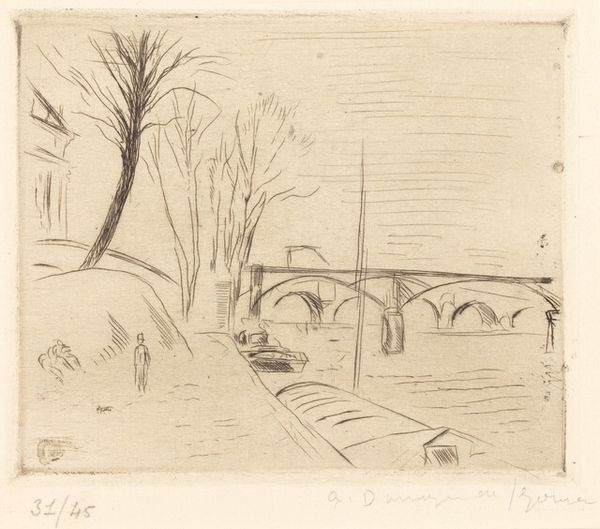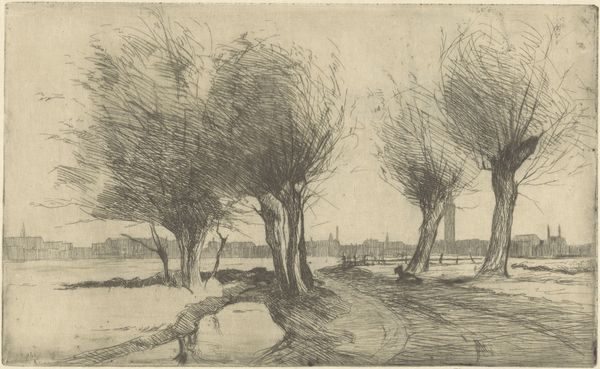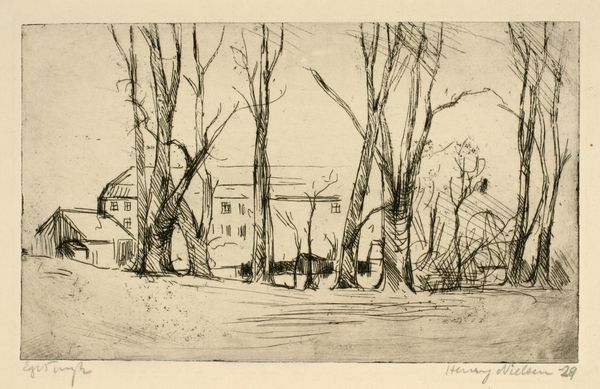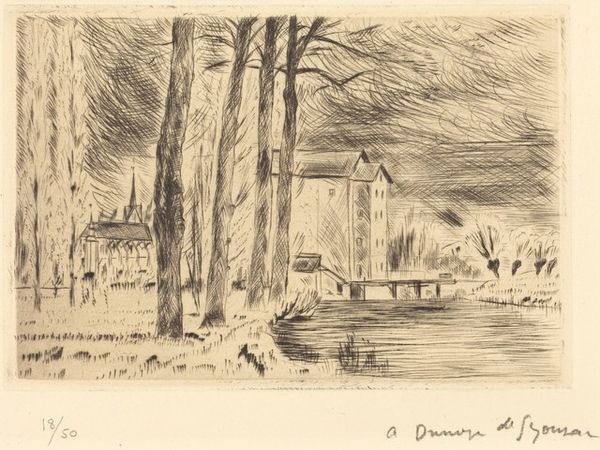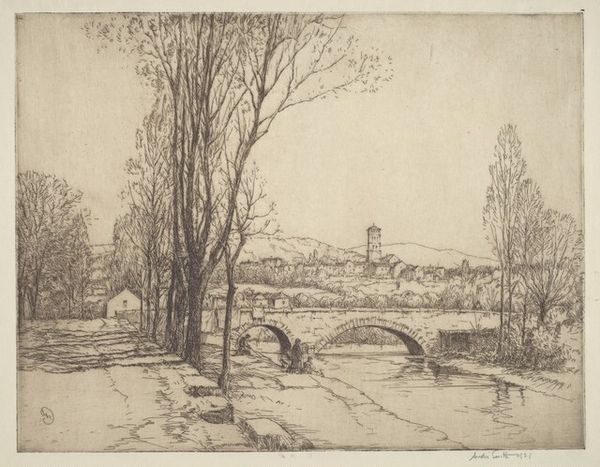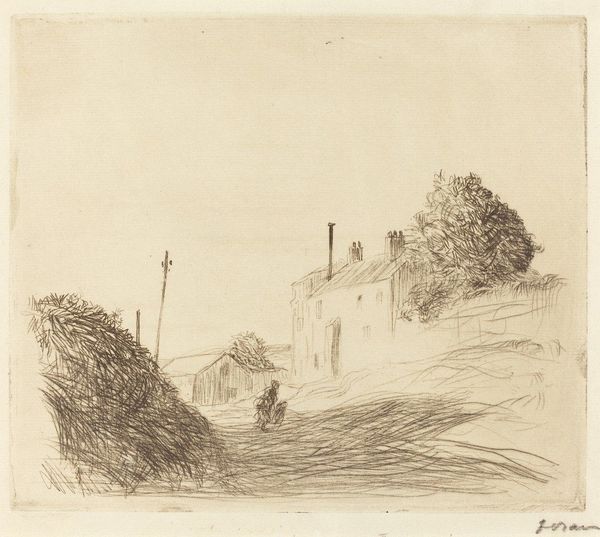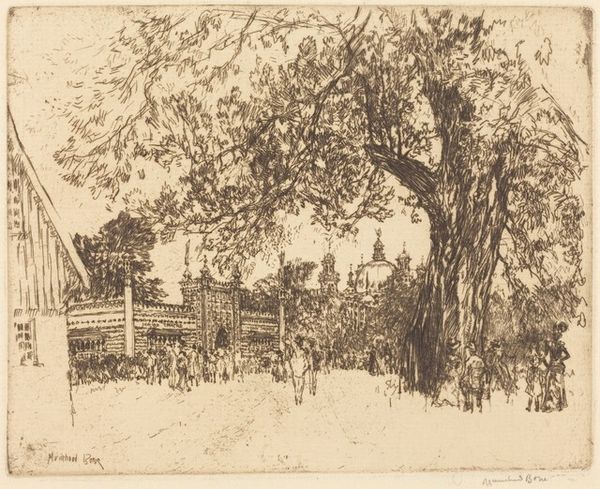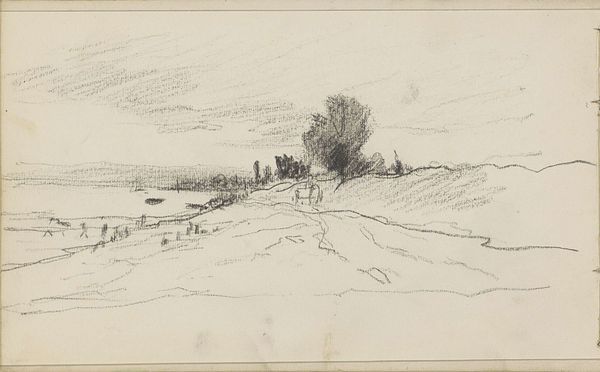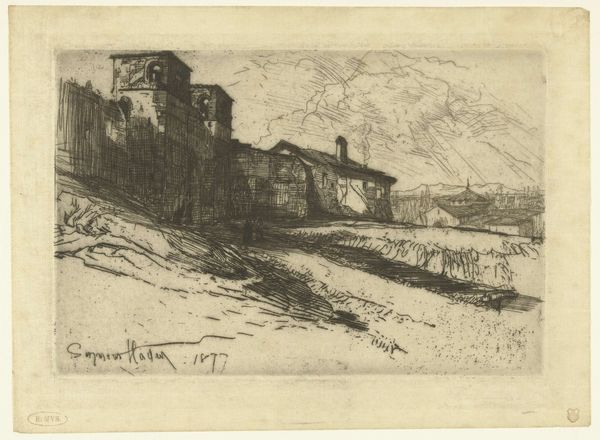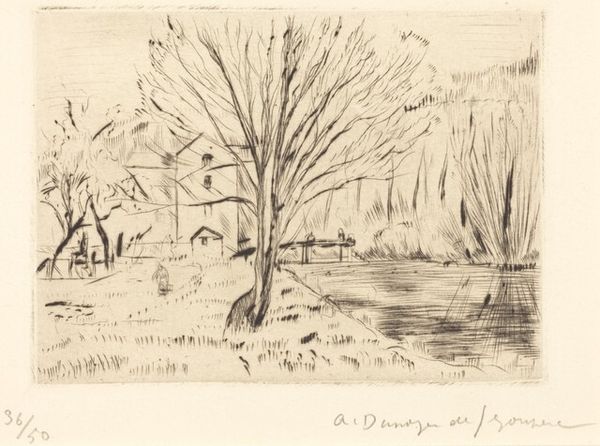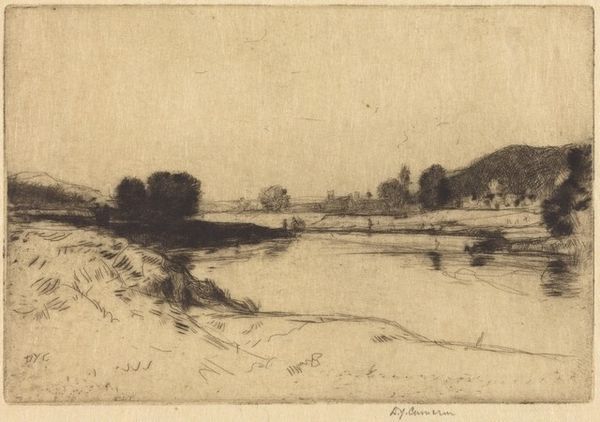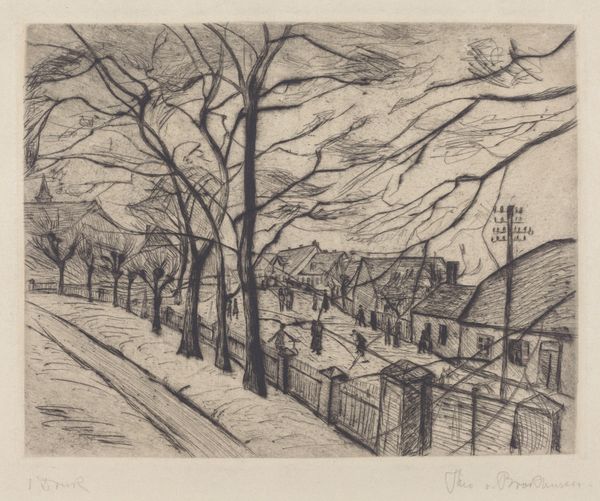
Copyright: National Gallery of Art: CC0 1.0
Curator: André Dunoyer de Segonzac’s 1924 etching, “The Apse of Notre Dame," offers a glimpse into a Parisian cityscape. Editor: Immediately, the starkness hits me. The leafless trees and scratchy lines evoke a somber, wintry atmosphere. Is this about capturing the imposing structure, or about a bleaker state of mind? Curator: The power of the etching technique lies in its reproducible nature, allowing widespread access to this specific perspective. Etching involves applying acid to incise the design, line by line, into a metal plate, a craft steeped in history. Editor: And what history is represented in the Notre Dame itself, standing as a steadfast emblem of faith and civic pride across the centuries? Even partially obscured in the background, its silhouette resonates profoundly. Curator: Segonzac’s decision to focus on the Apse might suggest a fascination with the architecture's underlying support. These structural elements are a physical manifestation of a collective effort, generations contributing to the cathedral’s endurance. The boats add an element of working class in this piece, don't you think? Editor: Perhaps. The river scene certainly adds layers. The boats on the water may recall journeys, either literal or spiritual. In this sense, could Segonzac be reflecting on time, faith and persistence through this piece? Curator: Perhaps, but consider also that Segonzac wasn’t solely reverent. He served as a camouflage artist during the First World War. Did he engage with visual depictions in the service of the state? Could that experience influence a preference for graphic production of artworks? Editor: That's a really interesting point to note about his practice, to then view his work again. For me, it reinforces the depth an image can hold; its iconic power endures and shapes our interpretations. Curator: From a materialist angle, this etching provides insight into the mechanics of artistic dissemination in the early 20th century, the democratization of art production. Editor: Yes, and viewing it from an iconographic viewpoint has reminded me of the power of shared cultural symbols. Curator: I hadn't thought of it that way before, but thinking about materials offers another set of perspectives here!
Comments
No comments
Be the first to comment and join the conversation on the ultimate creative platform.
